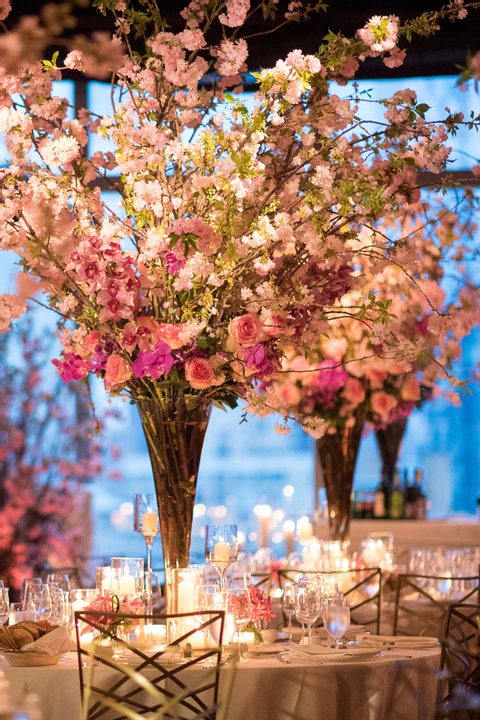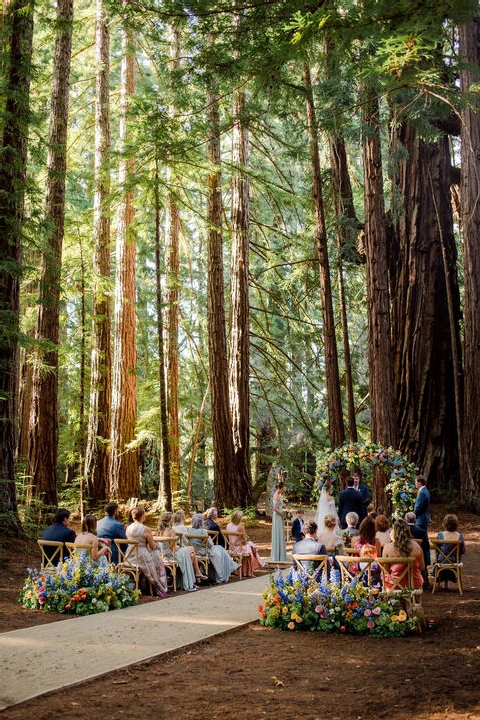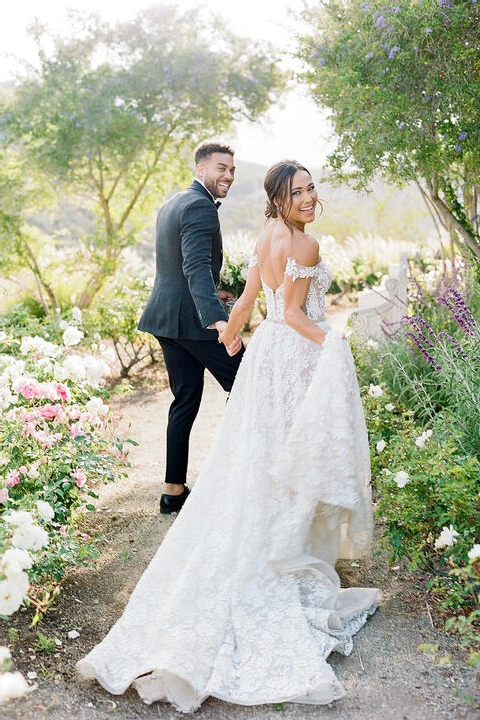
Rustic or beachy, far-flung or backyard, there’s one factor linking every type of wedding decor: Flowers. No matter what your dream wedding looks like, blooms and blossoms are more than likely a key part of it (and if you haven’t quite figured out what your petal language is, well, we can help with that).
When you think about the sheer scope of wedding floral design—including bridesmaids’ flowers, the groom boutonniere, wedding table flowers, and more—you quickly realize the importance of picking the right pro. The wedding florist you decide to work with will end up being a key member of your team, responsible for bringing some of the biggest parts of your day-of vision to life. And while there are plenty who are pure artists, they can’t spin magic out of thin air. Prior to searching for and booking a wedding florist, devote time to figuring out your floral MO.
Do you close your eyes and see a space dripping with flowers, or are you more inspired by a more sparse, minimalistic look? All about a wild, undone enchanted forest vibe? Love when flowers are clean, monochromatic, and decidedly manicured? It all makes for a breathtaking wedding—and figuring out your preference early will help you achieve what you want.
Picture what you see in your bridal daydreams, and browse images of other ceremonies for wedding flower ideas you do and don’t like (our wedding library is a rich repository of real-life examples to check out). Get practical too, and think about where you’ll actually want blossoms on the big day. Some couples want lots and lots of florals in the ceremony space itself, from an arch that you’ll stand under to sprays at the end of each aisle. Others prefer to keep things fairly minimal, with wedding reception flowers being the main show (think massive arrangements on each table).
1. Get Serious About What Wedding Flowers You Want (And Don’t Want)
Start searching “wedding flower ideas” and you’ll immediately see how wide and varied the category is—differences between bridesmaids’ flowers and reception flowers that pre-engaged you never would have noticed suddenly seem massive.
Pay attention to flower types and colors you like but also design elements: Does a tightly arranged, dense look appeal to you, or something more loose and organic? Is drama or romance more important, aesthetically? If you have other elements of your wedding laid out (like the venue or bridesmaid dresses), you can work off that for a cohesive theme. “One of my favorite design details to make the color palette shine is through flowers,” says Jessica De Corse of LA-based flower studio Ellamah. “Flowers bring in dimension to an event space and set the mood for the entire evening.”

2. Start Researching Wedding Florists
Word-of-mouth recos are always a good way to go, so consider asking anyone whose ceremony left an impression on you, bloom-wise, to share the name of their wedding florist. Whether it’s a wedding you attended or something you stumbled upon via social media doesn’t matter—ask in both cases. Brides are always flattered to be complimented and typically eager to help someone who’s planning their own dream fȇte.
If you’re working with a wedding planner or have your venue booked, you can also inquire if either have recommendations (this is especially handy if you’re planning a destination wedding somewhere small where wedding florists might not be a dime-a-dozen). Review wedding floral designs in our library of real-life ceremonies, too; search by area, wedding type, or season for photos that will most closely align with what you’re after. Note the wedding florists credited, and reach out directly for more information or a meeting.
3. Figure Out Your Needs Before Meeting Wedding Florists
In advance of your first meeting to talk blossoms, make sure you’ve thought about everything you’ll need to discuss. “Color scheme, fashion and overall vibe of your wedding are key to a cohesive look with the florals,” says florist Yumiko Fletcher of Hana Floral Design. “While some of this will likely change as you continue to plan your big day, it's helpful to have some of this in mind prior to meeting your florist.” It’s smart to come in with a list of your needs—e.g., a chuppah, a dozen bridesmaids’ bouquets, wedding table flowers for three long banquet tables—and your wants. And there are also some nitty-gritty details to discuss in that initial wedding florist meeting that you might not have thought of, like whether the florist has worked with your venue before, whether they’re open to traveling (and whether that travel will mean a minimum budget requirement), even the size of your wedding is an important factor. “Large scale weddings with detailed installations and ‘wow’ factors require a large floral team,” adds Fletcher. “If you know your wedding is big, make sure you consider florists with a team behind their brand.”
All the wedding flower ideas you’re likely to talk through with your florist can of course affect some of the above, but some (like, say, a chuppah) may very well already be nonnegotiable. As for your wants, those should be things you’re interested in but need to suss out further. A hanging floral installation, for instance, is stunning, but might not be an option in your venue (or might push you way over budget). And, on that note…
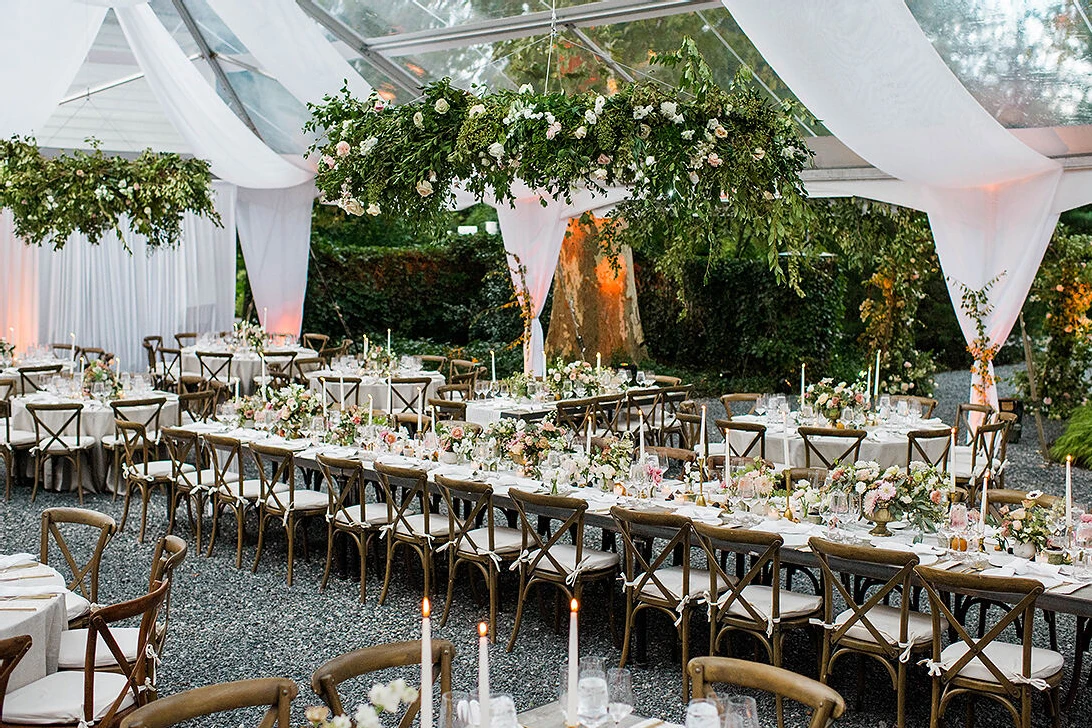
4. Start Wrangling Your Wedding Budget
The average wedding florist cost is around $2,000 on the low end, but can easily be well north of $5000 if you want lots of flowers or special elements. In general, couples allocate about 10 percent of their entire budget toward florals. (Use our expert-sourced tips to figure out your wedding budget if you’re at the beginning of planning).
So, what exactly does that number entail? Wedding reception flowers of course, plus bride and bridesmaids’ flowers, a groom boutonniere, MOB + MOG corsages, and any arrangements positioned on a ceremony altar. Oversized arrangements are likely to cost more, and you’ll also be paying for the labor and vessels to hold everything. Specific blossoms that are hard to find, delicate to transport, and/or out of season—or all three—can also get costly.
One thing to consider when it comes to budget is repurposing the flowers from your ceremony for the reception (the ferrying would happen during cocktail hour). “A cocktail hour in between allows enough time to transition some of the decor to a bar or other place within your reception space,” says planner Lindsay Jani of Simply Sunshine Events. “It’s a great way to maximize your budget and cut back on waste.” It’s a bit more work, but the cost-savings could be worth it—especially when you keep in mind that guests are almost guaranteed not to notice.
And lastly, in these unprecedented times (when do we get to stop calling it that?), much like other areas of production and the service industry, the flower industry has been affected as well. “Especially now with Covid, there is a good 15% increase from pre pandemic pricing,” advises Fletcher. “So in other words, 2019's $10K on flowers is really $15K for 2021/22."
5. Assess Your Wedding Flower Fantasies—and How Realistic They Are
Yes, you should be able to have exactly what you’ve been envisioning, but some things just aren’t feasible. Obsessed with peonies but getting married in autumn? It will be possible to find the flowers somewhere on the globe, but it won’t be cheap (or particularly eco-friendly). “Inquire as to what flowers are in season during your wedding month, and decide if you are willing to spend more to get something you absolutely must have that is out of season,” advise Sarah Hackforth and Jenifer Zukovsky of Fionna Floral. Climate can also be a factor that an experienced wedding florist will be able to talk through with you. Certain blossoms just aren’t cut out to withstand high heat, direct sunlight, or any of the other assorted stressors they’ll meet during your big day.
As a central part of your decor, flowers are intended to have an impact on your guests . . . but of the complimentary variety. You’ll want to avoid placing blossoms with strong perfumes near dinner or cocktail tables as they can affect a diner’s experience; likewise, pollen can potentially stain delicate silk or satin dresses, a factor you should consider if using these types of flowers. It’s not that you need to nix these types of blooms, but just be cautious of placement.
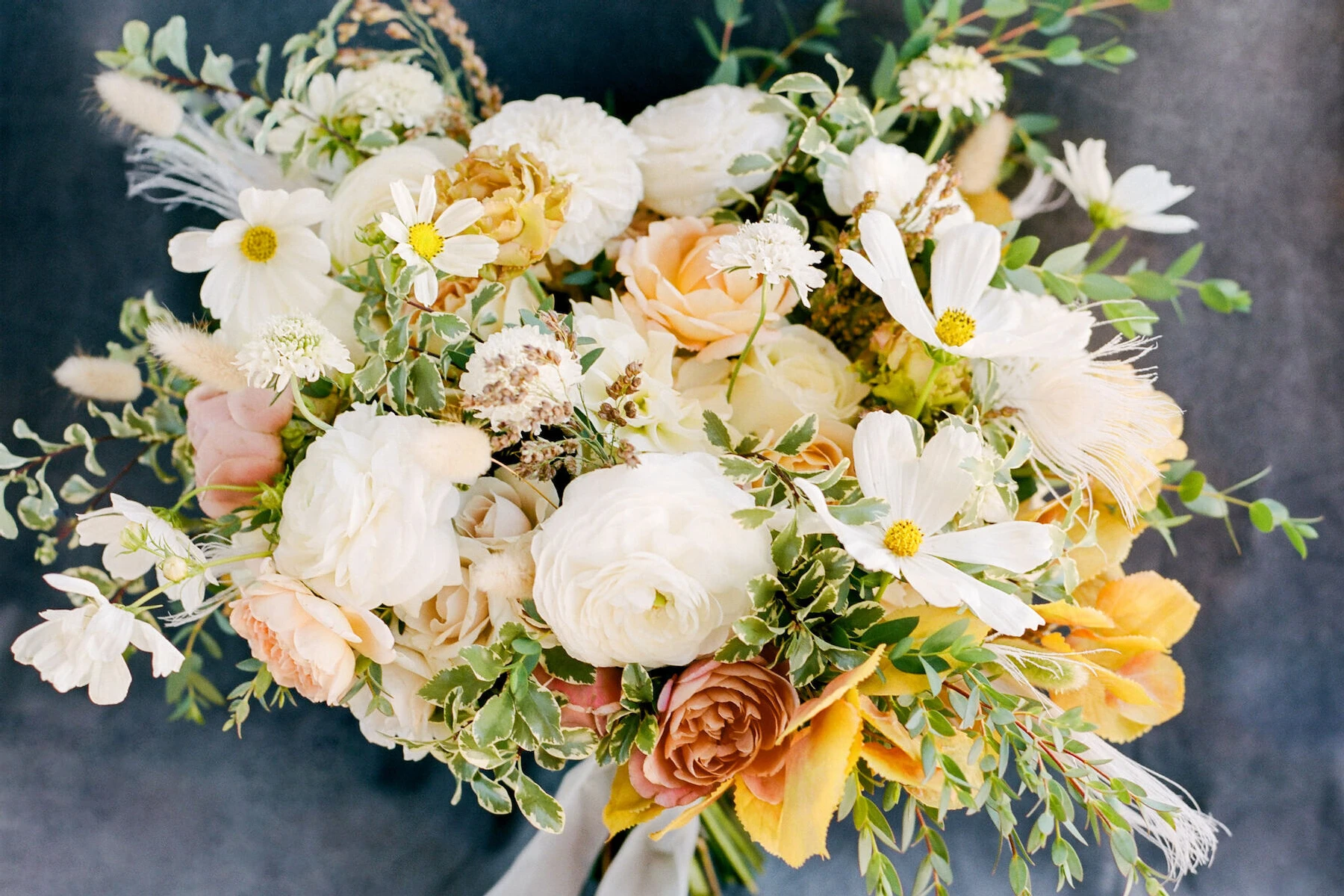
6. See If There’s Chemistry With the Wedding Florist
As with anyone involved in planning your nuptials, the wedding florist is someone you’ll spend a fair amount of time with. You ought to be simpatico in some regard, with similar aesthetics, energy, or attitude. If you can meet with a potential florist in person, do; if not, ask to touch base over a video call so you can see how conversation flows.
Try to talk to couples they’ve worked with to hear about their experiences, and look at past examples of wedding floral design they’ve created. Try to do the latter in advance of a meeting so you can point out elements you particularly liked (or didn’t—while you don’t need to critique their work, you can call out things that you don’t think would match with your goal). Every single wedding they’ve done needn’t be your cup of tea, but you ought to like the majority of their work. “While many florists can do multiple styles of work, it’s best not to veer away from their specialty and passion!” suggests planner Virginia Frischkorn of Bluebird Productions. Many creatives do their best work when they’re given some free rein—forcing your vision on someone who tends to gravitate in a different direction won’t be a recipe for success.
Come prepared with questions for potential wedding florists. You’ll want to ask about their team size, if they have other weddings booked on the same weekend, what sort of timeline they work off of, and whether they’re able to come to the table-setting appointment (it’s helpful if they’re available). If sustainability is something you’re interested in weaving throughout your wedding, look at the areas where you can be more eco-conscious with your arrangements and ask your florist if they can support. “We are huge fans of donating event florals to organizations that can repurpose them,” says wedding planner Leslie Mastin. “This could mean partnering with a tax-deductible non-profit such as Event E. or Repeat Roses, or it could be as simple as inviting guests to take arrangements home with them.”

7. Book!
You’ve done your due diligence, thought about flower types and colors, and considered who would be the best fit to make your wedding flower ideas come to life. Go ahead and make it official! (Don’t forget you can connect directly with florists via our site, too).






